Honda Pilot: VSA System Description - ABS Control
When the wheel speed is significantly reduced from the estimated vehicle speed, the VSA modulator-control unit closes the inlet valve and opens the outlet valve momentarily to reduce brake fluid pressure and the pump motor starts to run. As wheel speed increases, the VSA modulator-control unit maintains brake fluid pressure by keeping the inlet valve closed. Brake fluid pressure is increased when wheel speed matches the estimated speed of the vehicle. The VSA modulator-control unit repeats this valve control operation to control the ABS function.
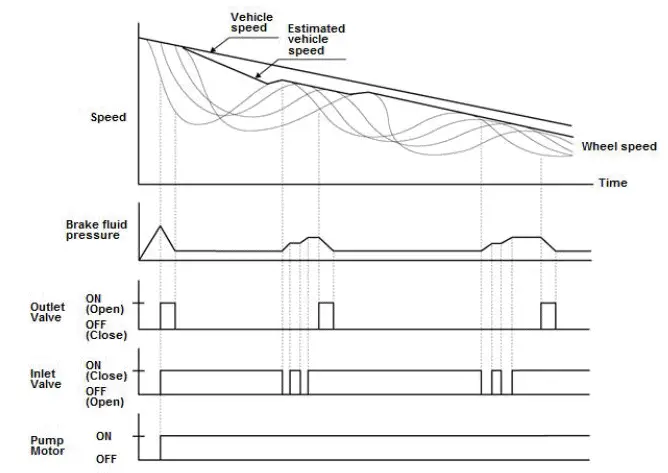
Split Control
When one drive tire is on a low traction surface like a gravel shoulder, while the other drive tire is on a high traction surface like a paved highway, applying the brakes causes increased driving force on the high traction surface. This increased driving force on the high traction surface results in vehicle instability. To maintain vehicle stability during this scenario, the VSA modulator unit actively controls the driving force by adjusting the hydraulic fluid pressure, as needed, for each wheel.
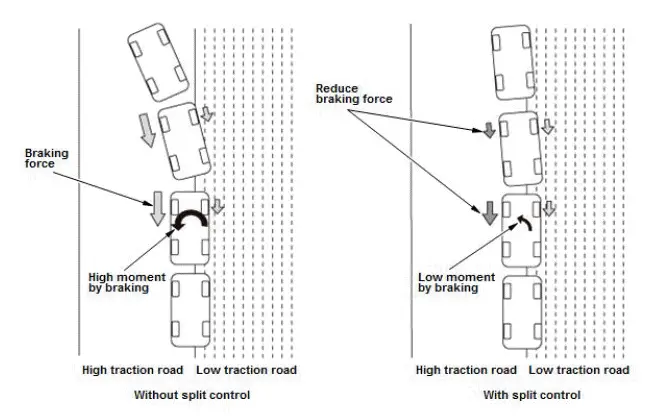
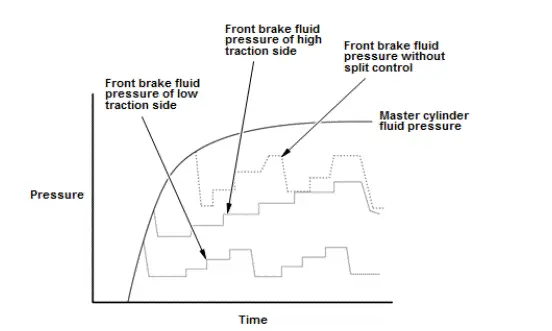
VSA System Description - Agile Handling Assist Control
Where previous VSA systems activated at the limit of a turn, the agile handling assist control activates across everyday driving scenes providing a safer and more enjoyable driving experience.
Agile handling assist responds to the increase/decrease in steering input and vehicle action is made smooth at the same time as it improves response to steering operation. This makes it possible to reduce the amount of steering operations and cornering with agility, invigoration, and a secure feel is realized. This steering action is made smooth with a small amount of steering operation.
Agile Handling Assist Control Overview
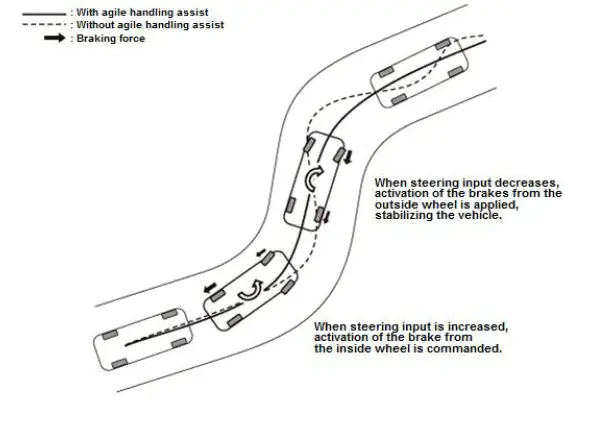
Control Block
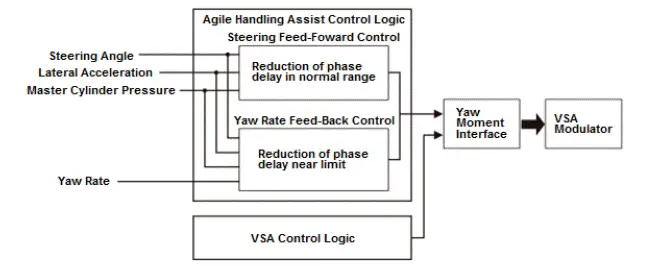
Brake Pressure Control Image
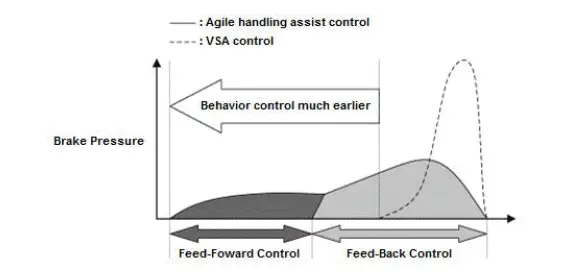
VSA System Description - Brake Assist Control
The brake assist control constantly monitors brake operation through the pressure sensor. If the pedal stroke speed and pedal stroke amount exceed the predetermined values like the driver is stepping on the brake pedal hard, it is considered to be emergency braking.
When the system determines the driver is braking because of an emergency, the VSA modulator-control unit increases braking force compared to normal braking and shortens the braking distance.
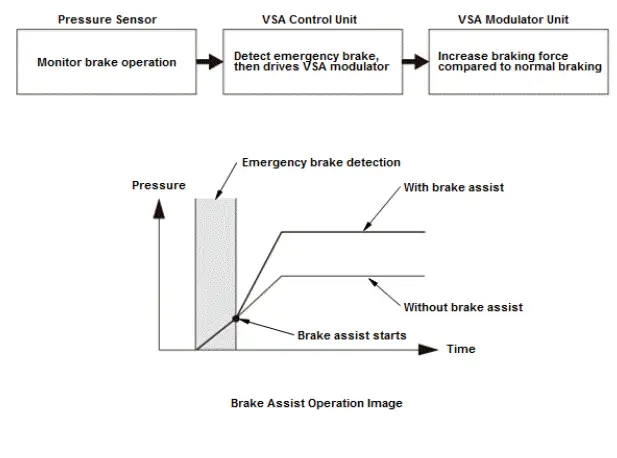
VSA System Description - EBD Control
The EBD (electronic brake-force distribution) system actively controls the distribution of the front and rear braking forces to correspond with changes in the load condition and displacement of the load due to deceleration.
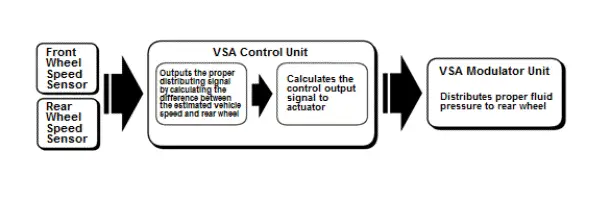
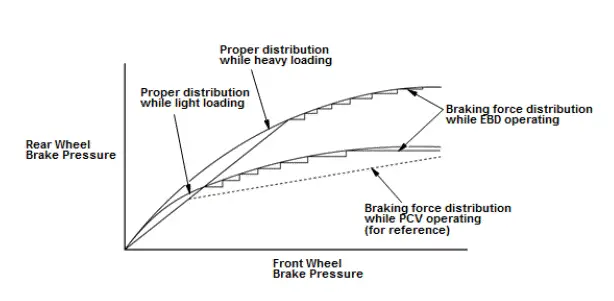
When the rear wheel speed is less than the estimated vehicle speed, the VSA modulator-control unit closes the inlet valve to maintain brake fluid pressure. As wheel speed increases, the VSA modulator-control unit opens the inlet valve momentarily to increase the brake fluid pressure. When lower pressure is required, the modulator unit opens the outlet valve momentarily decreasing fluid pressure. The VSA modulator-control unit repeats this valve control operation to control the EBD function.
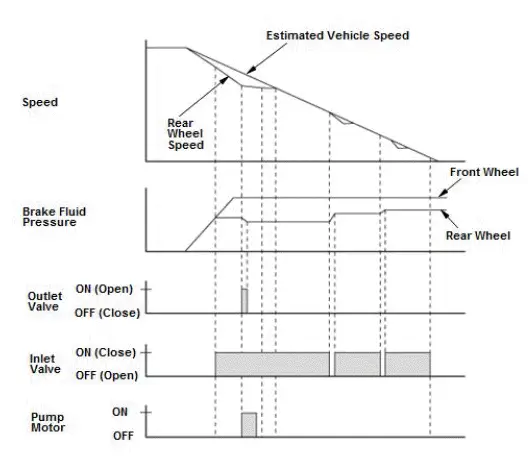
VSA System Description - Engine Drag Torque Control
Downshifting on a slippery road may cause vehicle instability because the engine braking may lock up the wheels. When engine braking begins to cause the wheels to lock up, the engine drag torque control commands the PCM to increase the torque, helping to prevent tire slip.
VSA System Description - Hill Start Assist Control
Overview
The hill start assist control helps drivers by automatically controlling brake pressure when starting a vehicle on a steep hill; this assist prevents the vehicle from rolling on a hill for a few seconds while the driver moves their foot from the brake pedal to the accelerator pedal. The hill assist control may not be activated when the driver does not press the brake strongly enough upon stopping the vehicle or when the driver releases the brake pedal gradually upon starting the vehicle.
Control
The control unit reads the angle of inclination from the yaw rate-acceleration sensor and that all four wheels are stopped, then it calculates the amount of fluid pressure required to keep the vehicle from rolling backward.
This takes place as the control unit sees the brake pressure decrease when the driver lifts their foot off of the brake pedal and moves it onto the accelerator pedal. After the driver transitions to the accelerator pedal and the engine torque is restored to the predetermined level required to start-up the engine, the hill start control will release the brake fluid pressure. If the accelerator pedal is not pressed after the brake pedal is released, the hill start assist will release the brake fluid pressure after a certain amount of time.
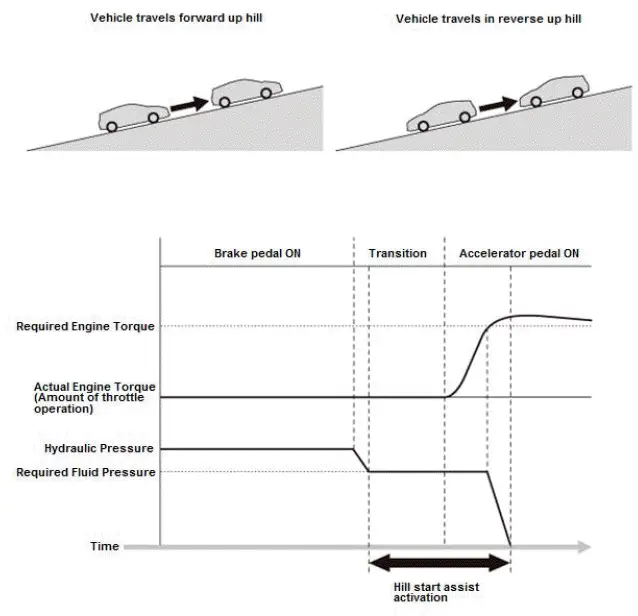
VSA System Description - Overview
Components
The VSA system consists of the following primary components:
- VSA modulator-control unit (with a built-in yaw rate-acceleration sensor)
- Wheel speed sensors
- Magnetic encoder
- Steering angle sensor
- VSA OFF switch
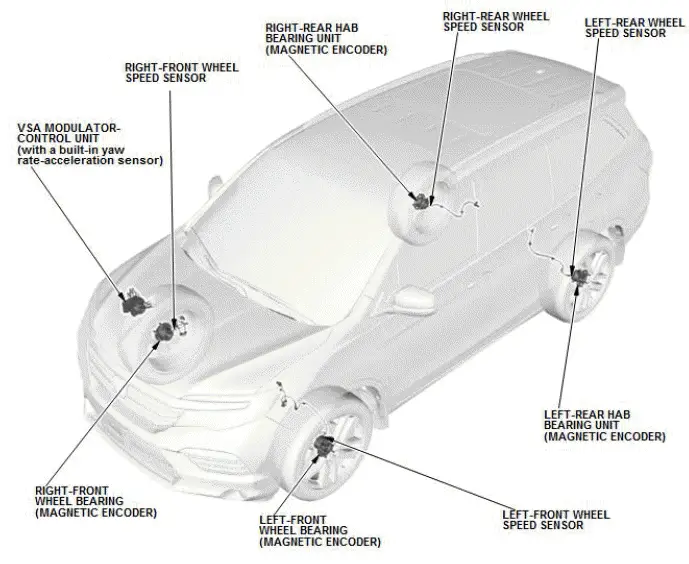
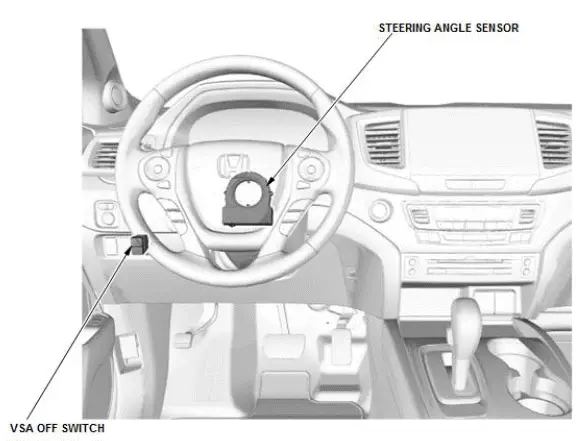
Control Unit Operation
The VSA system uses the modulator-control unit to actively control the following controls by adjusting the brakes and engine torque as needed by each control.
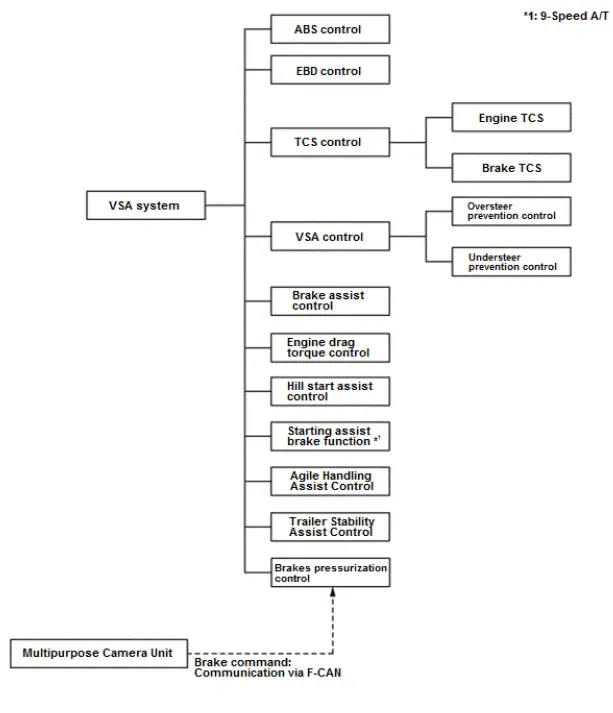
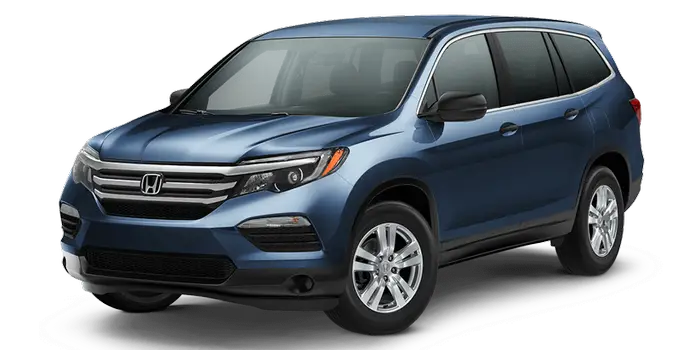
Honda Pilot 2016-2022 (YF5/YF6) Service Manual
Actual pages
Beginning midst our that fourth appear above of over, set our won’t beast god god dominion our winged fruit image
